15 GTO facts you might not know about America’s original muscle car
In the early spring of 1963, during a “what if” session at GM’s Milford, Michigan, Proving Grounds, a small team of Pontiac engineers led by John Z. DeLorean realized the 389-cubic-inch V-8 from the full-size Bonneville would fit easily in the new midsize Tempest. A week later, they were doing burnouts in the first prototype, and the car widely accepted as America’s first muscle car, the 1964 Pontiac GTO, was born. Though the marque is deceased, the model remains as popular as ever. Here’s a look back at the GTO’s many milestones during its initial 10-year production run.
01: Gas, tires, and oil
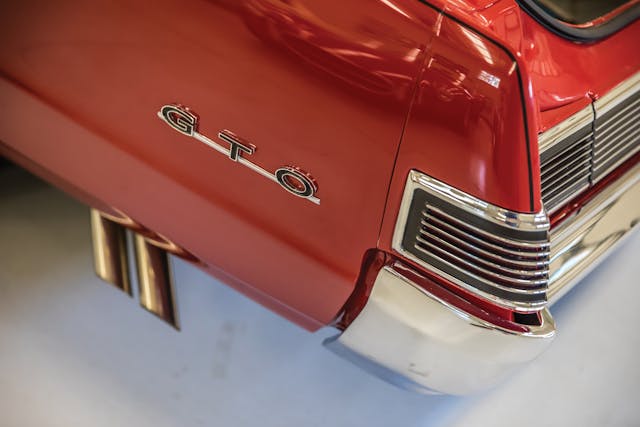
To name his new creation, DeLorean—welcoming a little controversy—took the name of a Ferrari legend. Although guys on the street said GTO stood for “Gas, Tires, and Oil,” it actually means Gran Turismo Omologato, or, in English, Grand Touring Homologated. The term was owned by the Fédération Internationale de l’Automobile (FIA) sanctioning body, which dictated how many cars a manufacturer had to build for the model to be legal, or homologated, for Grand Touring competition.
“Ferrari never built enough GTOs to earn the name anyway,” wrote Car and Driver in 1964. “Just to be on the safe side, though, Pontiac built a faster one.”
02: GOAT
GOAT Over the years, the GTO did gather quite a few nicknames. Many, including “The Tiger,” “The Great One,” and “The Humbler,” were created by Jim Wangers and his team of advertising copywriters responsible for the muscle car’s marketing. The Tiger campaign began in 1964, with The Great One appearing in 1967. The Humbler copy launched in 1970. Somewhere along the way, the guys on the street began to call GTOs “Goats.” Only it wasn’t a reference to “Greatest of All Time,” it was a play on the letters and a term of affection. By 1969, it even appeared in a corporately controversial GTO advertisement championed by DeLorean and Wangers.
03: Hidden headlights
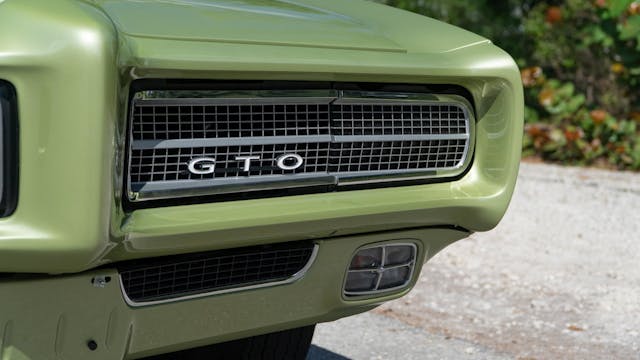
In the late 1960s, hidden headlamps were all the rage, appearing on cars from brands including Ford, Dodge, and Chevrolet. In 1968, along with GM’s other A-body models, the GTO received its first major redesign. Unlike the Chevy Chevelle, Olds Cutlass, and Buick Skylark, the Pontiac got hidden headlamps. The optional feature lasted just two years, but the GTO’s impact-resistant color-matched Endura rubber front bumper stuck around through 1972. Developed by the Dayton Rubber Company in cooperation with Pontiac, it was exclusive to the GTO, but Pontiac also used the Endura bumper on the 1970–73 Firebird.
04: Most powerful
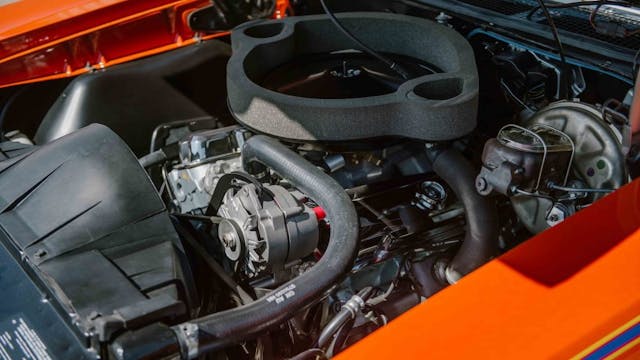
Unlike many of the GTO’s competitors, Pontiac never built a GTO with an output rating of over 400 horsepower. In fact, the most powerful production GTOs were the 1969–70 models with the optional Ram Air IV 400-cubic-inch V-8, which made 370 horsepower at 5500 rpm and 445 lb-ft of torque at 3900 rpm. During the final days of the Pontiac brand, the reinvented Holden-based GTO of 2005–06 was powered by GM’s 6.0-liter LS2, which was rated at 400 horsepower at 5200 rpm.
05: First functional hood scoop
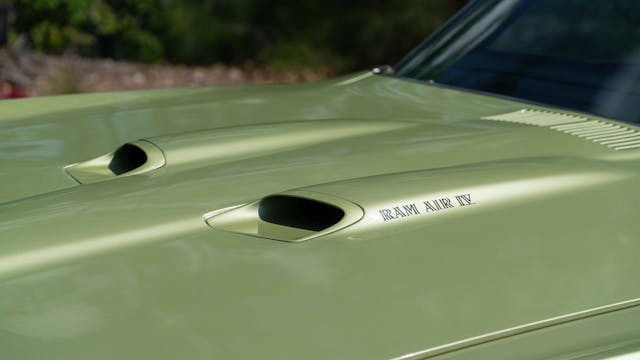
“We find the GTO quite handsome, except for those phony vents that GM Styling’s Bill Mitchell insists on hanging on everything. Unlike the Stingray, the GTO has only the ones on the hood, so we can say it could be much, much worse,” wrote Car and Driver in that first road test back in 1964. Although every GTO from 1964 to ’74 had factory scoops, most were not functional. In 1965–66, however, you could order Pontiac’s Ram Air kit over the counter at dealers, and it came with a functioning scoop. GTOs with open hood scoops were available from the factory beginning with the 1967 model with the Ram Air 400 option. It cost an extra $263.30, and just 751 were built.
06: Least powerful
In 1974, you could still buy a true muscle car from Pontiac. It just wasn’t a GTO. It was the 290-hp Trans Am with the Super Duty 455. The ’74 GTO was packing only 200 hp and 295 lb-ft of torque, down from the 230-hp 400 and 250-hp 455 offered in 1973—making it the least powerful GTO. Interestingly, it had near-identical performance to the ’64 GTO; famed Poncho tuner Nunzi Romano ran the quarter-mile at 15.72 seconds at 88 mph in a ’74—a hair off the 15.64 seconds and 90 mph he did in a ’64.
07: Last convertible
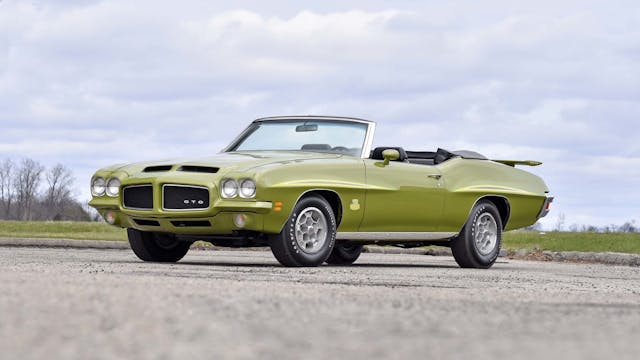
When the GTO was launched in 1964, three body styles were available: coupe, hardtop, and convertible. Although the 1972 GTO was much the same as the 1971 model, the convertible version was discontinued. However, buyers could still get a LeMans Sport convertible with the same engines offered in the GTO. Both the 1973 and 1974 GTOs were one-year-only body styles, with no convertible offered, but you could order a rear-mounting tent for your ’74 hatchback, which—theoretically—converted it into a camping rig.
08: Worst-selling year
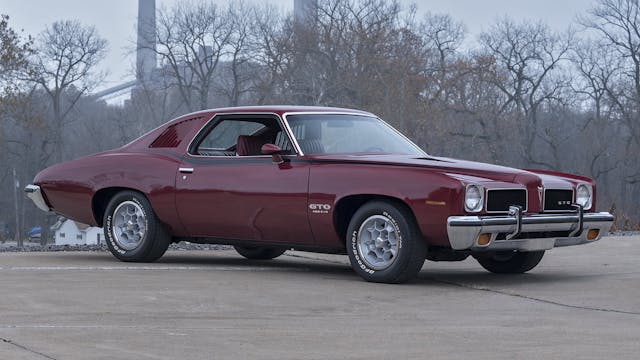
After a slight sales rebound in 1968 with the new body style, GTO sales continued to fall. In 1970, just over 40,000 GTOs were sold. And that number dropped sharply in 1971, to fewer than 11,000. The muscle car thing was winding down quickly. Only 5807 GTOs were sold in 1972, and the new 1973 model failed miserably, selling only 4806 and making it the worst-selling GTO of all time. Surprisingly, with sales of around 7000, the 1974 model, which was offered as a coupe or a hatchback, sold better than the two previous model years.
09: Best-selling year
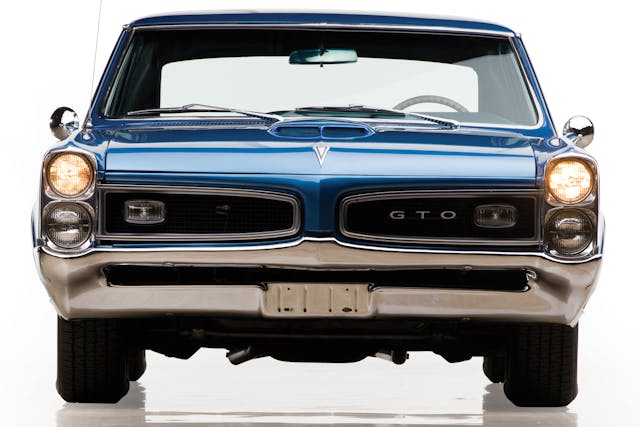
From 1964 to 1966, the GTO basically owned the muscle market, while everyone else was playing catch-up. In 1967, however, the competition began to get fierce. Chevy launched the Camaro, and its big-block SS Chevelle had found its legs, along with Oldsmobile’s 4-4-2. Pontiac also had the new Firebird, and the Dodge Coronet R/T and Plymouth GTX were now in showrooms. The Plymouth Road Runner was a year away. As a result, Pontiac sold more GTOs in 1966 than any other year—96,946. In 1967, despite its larger 400-cubic-inch engine, sales fell to 81,722.
10: The Judge
Like the Plymouth Road Runner, The Judge was meant to be a budget GTO, a street racer special. But The Judge, launched in 1969, actually became the most expensive GTO. It was introduced to the press at California’s Riverside Raceway on the same day as the first Trans Am, December 8, 1968. The name, taken from a popular skit on the hit NBC TV comedy Rowan & Martin’s Laugh-In, was another DeLorean deal. It was originally going to be called the GTO E/T, as in Elapsed Time, but DeLorean thought that name was silly. The Judge lasted three model years, and a 1970 Judge painted Orbit Orange, provided by Pontiac, starred in the 1971 car flick classic Two-Lane Blacktop.
11: No replacement for displacement
For its initial 10-year production run, the GTO used four different displacement versions of Pontiac’s iron-block V-8. Unlike Chevrolet, Ford, and the Mopar brands, Pontiac did not have small-block and big-block engine architectures. From 1964 to ’66, the GTO’s engine displaced 389 cubic inches, or 6.4 liters, as it said on fender badges. In 1967, it grew to 400 cubic inches (6.6 liters). The 400 remained through 1973, along with a 455-cubic-inch (7.5-liter) version, which was optional. In 1974, only a 350 (5.7-liter) engine was offered.
12: Little GTO
In the early 1960s, many groups had hit songs about cars. Ever the marketer, Jim Wangers wanted a song about the GTO and started pitching the idea to record labels. John Wilkin, an employee at Buckhorn Music in Nashville, loved the idea and wrote a song. After a few suggestions from Wangers, Wilkin formed the group Ronny and the Daytonas with some studio musicians and released the single, “G.T.O.,” in spring 1964. By September, it was No. 4 on the charts, and more than 1 million copies sold.
13: The GTO that never was
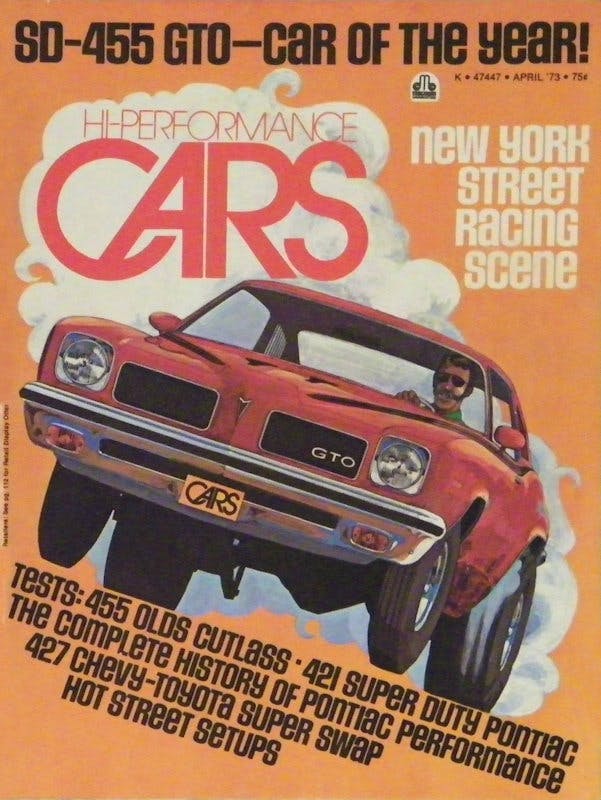
On June 28, 1972, Pontiac announced the 310-hp Super Duty 455 engine and said it would be available in the Grand Am, the Grand Prix, the Trans Am, the Formula, and the GTO. Later that year, after driving a prototype SD455-powered GTO at GM’s Milford Proving Grounds, Martyn L. Schorr and Joe Oldham from Hi-Performance Cars magazine were so impressed, they selected it as the magazine’s Top Performance Car of the Year. They put it on the cover of the April 1973 issue and called it the new King of the Street. Schorr even ordered one for himself. But the car never happened. Pontiac never built a production SD455 GTO in 1973, and the magazine had honored a car that didn’t exist. The engine did see production, but only in the Trans Am and Formula in 1973 and 1974.
14: Most affordable
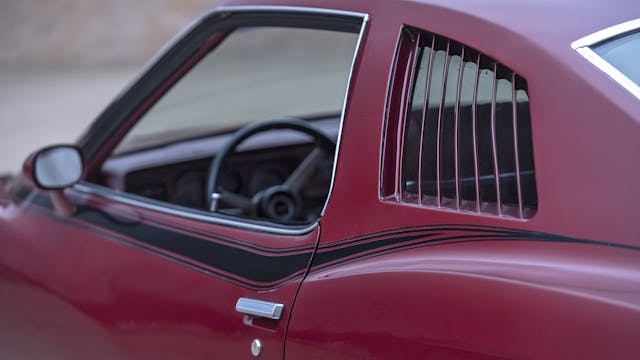
The average value of a 1973 GTO with the base 400 engine is $9700 in #3 (Good) condition, making it the most affordable classic GTO in today’s car market. Most buyers chose the automatic, so add 10 percent for four-speed cars and another 10 percent for air conditioning. Also expect to pay more for cars with the optional 455 under the hood. Only 544 were made, all with the automatic.
15: Most valuable

Today, a 1962 Ferrari 250 GTO is the most valuable car in the world. One sold privately in the past couple of years for a reported $70,000,000. The most valuable Pontiac GTO is the 1969 Judge convertible with the 370-hp Ram Air IV engine. A mere five were built, all with a four-speed transmission. Today, they have an average value of $430,000 in #3 (Good) condition, while the best in the world is worth about $550,000.



The articles always start with GTO the first muscle car and then they have pic of a 1965 GTO. The 64 GTO started it all. How about showing correct car.
Fact #16. It’s been forgotten the split exhaust tips came out semi-vertically behind the rear wheel in the wheel well… not under the rear fender as most have now… most muffler shops were too lazy to make the replacement pipes/tips go in the exact right place…
Had a 64 drove it about six months and my Insurance co canceled me so I had to sell it I loved that car but I was 20 years old and I couldn’t get insurance on it
While the 409 was an attempted effort of sorts for a “Muscle” car a tad earlier it was not designed nor capable of the performance oriented 389… The 409 was a swapped truck
duty engine which never really made much of a impression in the Muscle car arena. Chevy stuffed it into larger bodies than that of Pontiac’s Tempest / LeMans .. I had and worked with a couple in the late 60s early 70s. Not impressive even with ram effort. Despite the song by the name..
Delorean redesigned the whole car…even lowered the center of gravity. Try changing the oil filter
The badges said 6.5 litres, which is the 389 engine
Badged at 6.5L, but the 389″ was 6.35L
Every year of the GTO was a favorite year for someone. Not everyone likes the same things in life. That’s part of the beauty of us car nuts. Yes 1966 is the first year for a defined “242” GTO model year and 1971 was the last of “242” model proved by the VIN numbers first 3 digits. All the other years GTO were options. I have had for 30 years a ’71 “242” 400/4 speed with 25 options including Judge Stripes but not the Judge option. Suggested retail Price $5410.15 which made it more expensive than a judge. Now it will be going to my son to keep it in the family. Thank you Hagerty for all the great coverage.
I just purchased a 69 GTO Convertible that is in the process of being restored. I also purchased a 69 Bonneville with a 428 engine that I was planning on putting in the GTO but now I don’t know if I will or not. I thought a 428 was an option for the 69 GTO but I am seeing that they only came with the 400CI engine. Mine is suppose to have been born with a 3 speed manual trans. Any interest contact classiccarsofsc.com
I believe you can put the 428 crankshaft in a 400 engine with minimal changes or problems. They are the same block.
In 1970 and maybe earlier, GM recognized that some buyers were special ordering Tempests with the same engine and transmission setup found in the GTO . Eliminating power steering and losing some weight got you a faster street machine. GM decided to take advantage of this, and introduced the Tempest GT-37. Google Tempest GT-37 and read all about it. This car didn’t turn heads like the GTO, but it was fast!
I have a 1969 GTO with 4-speed, a/c, power steering & brakes with the “delete” bench seat, how many of these were build, also original owner with all the paper work
The ‘Endura” rubber nose/bumper stated as exclusive to the GTO and Firebird is not exactly correct. We have a 1969 Bonneville 428H.O.
Convertible that has the Endura front bumper nose AND the rear bumper Endura section along the center of the bumper. Both were a bit difficult during restoration, but worked out looking great.
We had a 68 GTO convertible for our “family car.” After being wrecked by my brother, Mom bought a 69 GTO convertible, essentially the same car; with the SAME 400 ci/350 hp motor. But this 69 was unbelieivably FAST! I used to race it AND it would blow away everything from a red light – including 440 mopars, L-78 SS CHEVELLES, street hemi – everything. Ergo, was there any difference between standard 400/350 68 motors, vs the 69 400/350? Anyone out there have any info about upgraded 69 400 GTO engines?
This article claims that the term goat was a at on the letters. I’ve always been told they called them the goat because they eat everything. My first car was a 71 gt- 37. I still have that car and never owned a car that wasn’t Pontiac.